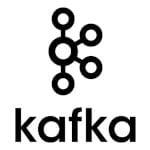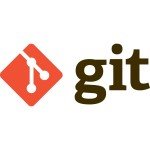Exploring the Synergy between Cloud Computing and IoT
1. Introduction
The technological landscape has witnessed a remarkable evolution in recent years, with two key players emerging at the forefront of innovation – Cloud Computing and the Internet of Things (IoT). Individually, these technologies have revolutionized how we process, store, and access information. However, it is the seamless integration of Cloud Computing and IoT that has opened up new dimensions of possibilities, enabling a connected world where devices, data, and services collaborate in unprecedented ways.
2. Understanding Cloud Computing and IoT
Before delving into the synergy between Cloud Computing and IoT, let’s briefly understand the essence of each technology.
2.1 Cloud Computing
Cloud Computing represents a model that involves delivering computing services, including storage, processing power, and applications, over the internet. Instead of relying on local servers or personal devices to handle computing tasks, users can access resources hosted on remote servers. This model offers scalability, flexibility, and cost-effectiveness, making it an ideal solution for businesses and individuals alike.
2.2 Internet of Things (IoT)
The Internet of Things refers to the network of interconnected devices embedded with sensors, software, and other technologies, allowing them to collect and exchange data. These devices range from everyday objects like refrigerators and thermostats to complex machinery in industrial settings. The IoT ecosystem facilitates seamless communication between devices, enabling them to work together to enhance efficiency, automation, and decision-making.
3. Synergy between Cloud Computing and IoT
3.1 Scalability and Flexibility
One of the primary advantages of Cloud Computing is its ability to scale resources based on demand. This aligns seamlessly with the dynamic nature of IoT devices, which generate varying amounts of data at different times.
Cloud services can efficiently handle the influx of data from IoT devices, ensuring that processing and storage capabilities can scale up or down as needed. This synergy allows organizations to manage the unpredictable nature of IoT-generated data without the need for substantial upfront investments in infrastructure.
3.2 Data Processing and Analytics
IoT devices produce an immense volume of raw data. Cloud Computing provides the necessary computational power to process and analyze this data effectively. By leveraging cloud-based analytics tools, organizations can derive valuable insights from IoT-generated data, enabling informed decision-making. Real-time analytics on the cloud empower businesses to respond promptly to changing conditions, optimize operations, and enhance overall efficiency.
3.3 Storage Solutions
The massive amounts of data generated by IoT devices necessitate robust storage solutions. Cloud-based storage systems offer a cost-effective and scalable solution for handling the diverse data types produced by IoT sensors. Additionally, cloud storage enables easy accessibility and sharing of data across devices and locations. This centralized approach ensures that organizations can efficiently manage, store, and retrieve vast amounts of IoT-generated data without the constraints of local storage limitations.
3.4 Security and Compliance
Security is a paramount concern in both Cloud Computing and IoT. The integration of these technologies allows for a comprehensive approach to security. Cloud service providers implement robust security measures to safeguard data during transmission and storage. This is complemented by the security features embedded in IoT devices, such as encryption and authentication protocols.
The synergy between Cloud Computing and IoT enables organizations to address security challenges holistically, ensuring the protection of sensitive data and maintaining compliance with regulatory requirements.
3.5 Cost Optimization
Traditionally, setting up and maintaining the infrastructure required for IoT applications could be a capital-intensive endeavor. Cloud Computing introduces a pay-as-you-go model, allowing organizations to pay only for the resources they consume. This cost-effective approach eliminates the need for significant upfront investments in hardware and infrastructure.
The synergy between Cloud Computing and IoT empowers businesses to optimize costs by efficiently managing resources, scaling as needed, and avoiding unnecessary expenditures on underutilized infrastructure.
3.6 Enhanced Connectivity
Cloud Computing acts as the backbone for IoT connectivity, providing a centralized platform for devices to communicate and share data. This connectivity extends beyond local networks, enabling a global network of devices that can collaborate seamlessly.
Cloud-based IoT platforms facilitate efficient communication between devices, applications, and services, creating an interconnected ecosystem that transcends geographical boundaries. This enhanced connectivity is crucial for the success of IoT applications, especially in scenarios where devices need to interact with each other in real time.
3.7 Edge Computing Integration
Edge Computing, a paradigm that involves processing data closer to the source of generation, complements the Cloud-IoT synergy. While Cloud Computing provides the centralized processing power for extensive data analytics, Edge Computing addresses the need for real-time processing at the device level.
The integration of Cloud Computing and the Internet of Things(IoT) allows organizations to strike a balance between offloading data to the cloud for in-depth analysis and performing time-sensitive tasks at the edge. The synergy between Cloud Computing, IoT, and Edge Computing ensures a comprehensive and responsive approach to data processing, catering to the diverse requirements of modern applications.
4. Conclusion
The integration of Cloud Computing and the Internet of Things(IoT) has paved the way for a connected future, where devices, data, and services collaborate seamlessly to drive innovation and efficiency. The synergy between these technologies offers a myriad of benefits, from scalable infrastructure and enhanced data processing capabilities to improved security and cost optimization.




